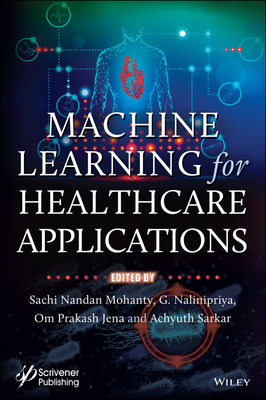Conversational AI
Dialogue Systems, Conversational Agents, and Chatbots
暫譯: 對話式人工智慧
Michael McTear
- 出版商: Morgan & Claypool
- 出版日期: 2020-10-30
- 售價: $3,330
- 貴賓價: 9.5 折 $3,164
- 語言: 英文
- 頁數: 251
- 裝訂: Hardcover
- ISBN: 1636390331
- ISBN-13: 9781636390338
-
相關分類:
Chatbot
海外代購書籍(需單獨結帳)
相關主題
商品描述
This book provides a comprehensive introduction to Conversational AI. While the idea of interacting with a computer using voice or text goes back a long way, it is only in recent years that this idea has become a reality with the emergence of digital personal assistants, smart speakers, and chatbots. Advances in AI, particularly in deep learning, along with the availability of massive computing power and vast amounts of data, have led to a new generation of dialogue systems and conversational interfaces. Current research in Conversational AI focuses mainly on the application of machine learning and statistical data-driven approaches to the development of dialogue systems. However, it is important to be aware of previous achievements in dialogue technology and to consider to what extent they might be relevant to current research and development. Three main approaches to the development of dialogue systems are reviewed: rule-based systems that are handcrafted using best practice guidelines; statistical data-driven systems based on machine learning; and neural dialogue systems based on end-to-end learning. Evaluating the performance and usability of dialogue systems has become an important topic in its own right, and a variety of evaluation metrics and frameworks are described. Finally, a number of challenges for future research are considered, including: multimodality in dialogue systems, visual dialogue; data efficient dialogue model learning; using knowledge graphs; discourse and dialogue phenomena; hybrid approaches to dialogue systems development; dialogue with social robots and in the Internet of Things; and social and ethical issues.
商品描述(中文翻譯)
這本書提供了對對話式人工智慧的全面介紹。雖然使用語音或文字與電腦互動的想法已經存在很長一段時間,但這一想法在近幾年才隨著數位個人助理、智慧音箱和聊天機器人的出現而成為現實。人工智慧的進步,特別是在深度學習方面,加上龐大的計算能力和海量數據的可用性,促成了新一代對話系統和對話介面的誕生。目前對話式人工智慧的研究主要集中在機器學習和統計數據驅動方法在對話系統開發中的應用。然而,了解以往在對話技術方面的成就並考慮它們在當前研究和開發中的相關性是非常重要的。對話系統的開發主要有三種方法:基於最佳實踐指導手工製作的規則基系統;基於機器學習的統計數據驅動系統;以及基於端到端學習的神經對話系統。評估對話系統的性能和可用性已成為一個重要的主題,並描述了各種評估指標和框架。最後,考慮了未來研究的一些挑戰,包括:對話系統中的多模態性、視覺對話;數據高效的對話模型學習;使用知識圖譜;話語和對話現象;對話系統開發的混合方法;與社交機器人和物聯網中的對話;以及社會和倫理問題。
作者簡介
Michael McTear, Ulster University
Michael McTear is an Emeritus Professor at Ulster University with a special interest in spoken language technologies and conversational interfaces. He has authored several books, including Spoken Dialogue Technology: Toward the Conversational User Interface (Springer, 2004), Spoken Dialogue Systems (Morgan Claypool, 2010, with Kristiina Jokinen), and The Conversational Interface: Talking to Smart Devices (Springer, 2016, with Zoraida Callejas and David Griol). Michael has delivered keynote addresses and tutorials at many academic conferences and at industrial conferences, including SpeechTEK, the Conversational Interaction conference, RE-WORK AI Assistant Summit, and ProjectVoice. Currently, he is involved in several projects where he is applying Conversational AI to areas such as mental health support and the home monitoring of the elderly.
作者簡介(中文翻譯)
邁克爾·麥克提爾,阿爾斯特大學
邁克爾·麥克提爾是阿爾斯特大學的名譽教授,專注於口語語言技術和對話介面。他著有多本書籍,包括口語對話技術:朝向對話式使用者介面(Springer,2004年)、口語對話系統(Morgan Claypool,2010年,與克里斯蒂娜·約基寧合著)以及對話介面:與智慧裝置對話(Springer,2016年,與佐拉伊達·卡列哈斯和大衛·格里奧爾合著)。邁克爾在許多學術會議和工業會議上發表過主題演講和教程,包括SpeechTEK、對話互動會議、RE-WORK AI助手峰會和ProjectVoice。目前,他參與多個項目,將對話式人工智慧應用於心理健康支持和老年人居家監測等領域。
目錄大綱
Preface
Acknowledgments
Glossary
Introducing Dialogue Systems
Rule-Based Dialogue Systems: Architecture, Methods, and Tools
Statistical Data-Driven Dialogue Systems
Evaluating Dialogue Systems
End-to-End Neural Dialogue Systems
Challenges and Future Directions
Bibliography
Author's Biography
目錄大綱(中文翻譯)
Preface
Acknowledgments
Glossary
Introducing Dialogue Systems
Rule-Based Dialogue Systems: Architecture, Methods, and Tools
Statistical Data-Driven Dialogue Systems
Evaluating Dialogue Systems
End-to-End Neural Dialogue Systems
Challenges and Future Directions
Bibliography
Author's Biography











